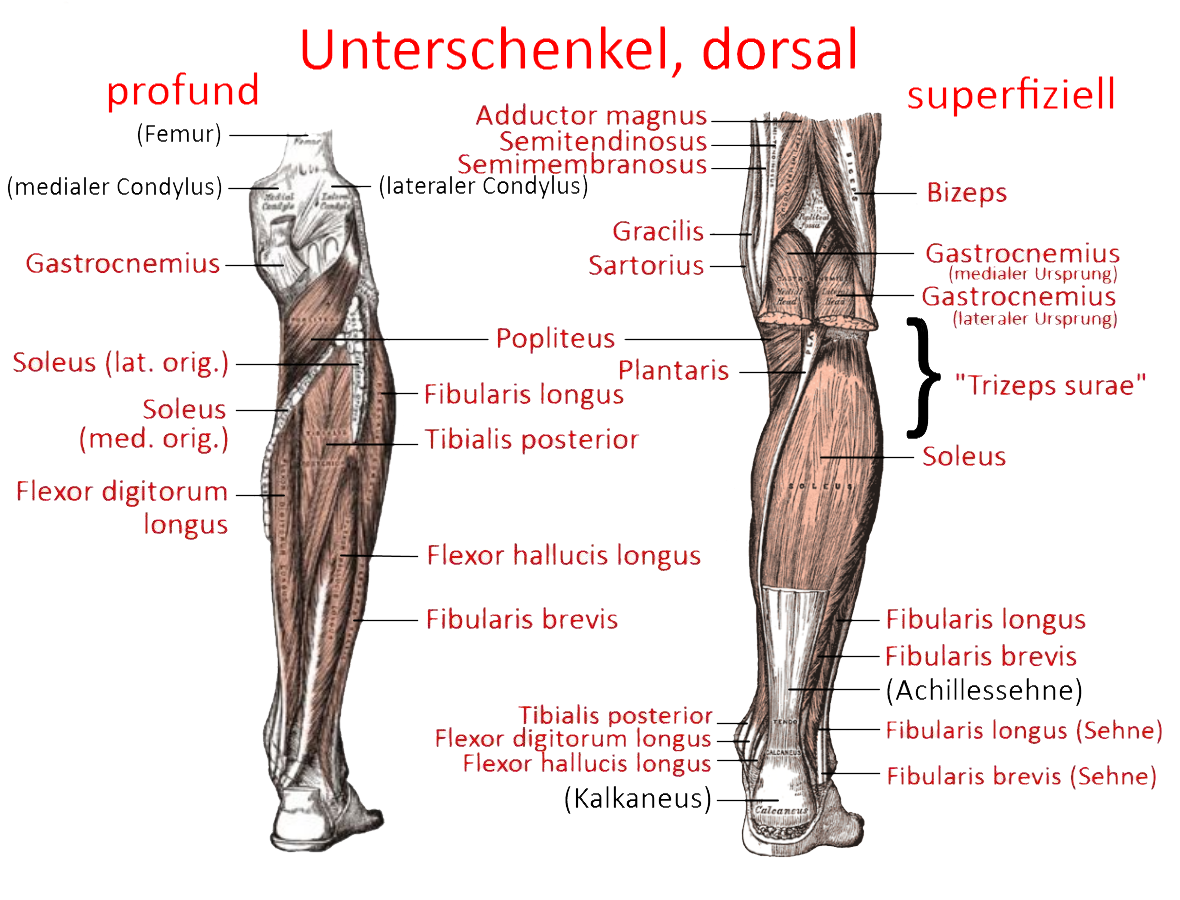
Linkmap

Soleus
the powerful monoarticular calf muscle which, together with the biarticular gastrocnemius muscle, extends the ankle (plantar flexion) and is involved in supination. Both together are known as the triceps surae. Seen from behind, the soleus lies in front of the gastrocnemius, i.e. more profound, whose two heads completely conceal it near the knee joint. The soleus is usually clearly visible from about halfway up the lower leg in the direction of the ankle. Restricted mobility of the soleus is probably the main reason why the heels are forced to lift when the knee joint is bent further in utkatasana. Due to the higher proportion of type 1 muscle fibers, it has a more holding/supporting function, whereas the gastrocnemius has a faster moving function due to a higher proportion of type 2 muscle fibers.
Origin: Linea musculi solei (back of the upper tibia)
Attachment: via the Achilles tendon on the tuber calcanei (posterior surface of the calcaneus)
Innervation: Nervus tibialis from Nervus ischiadicus from S1 and S2
Antagonists:
Movement: Plantar flexion in the ankle joint
Strengthening postures (852): 1. warrior stance, 3. warrior stance, 3. Warrior pose: backwards against the wall, parsvottanasana, parivrtta trikonasana, parivrtta ardha chandrasana, parivrtta parsvakonasana, ardha chandrasana, uttanasana: eka pada prasarita, vrksasana, hasta padangusthasana, tadasana: eka pada prasarita, uttanasana: eka pada prasarita, John’s sequence, deadlift
Stretching postures (851): utkatasana, malasana
Tests: definite yoga soleus flexibility test in malasana
